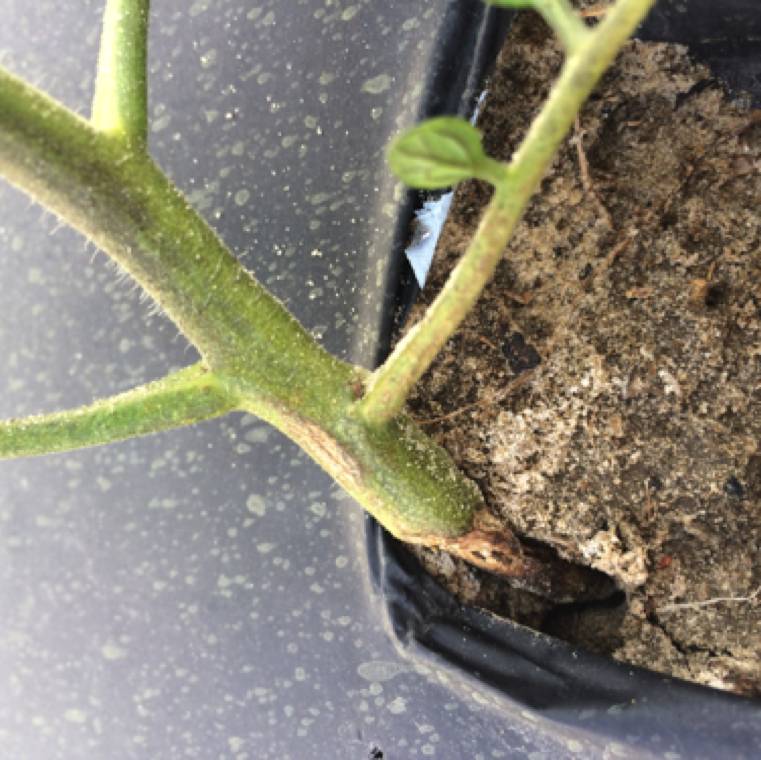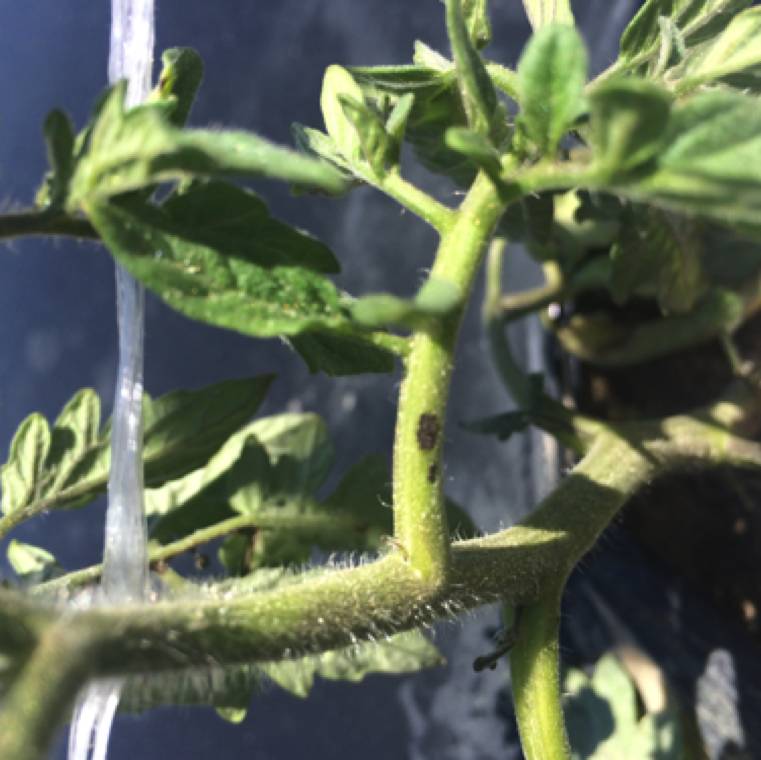Tomato
Alternaria Stem Canker

Alternaria alternata f.sp. lycopersici
Fungal Disease

Alternaria alternata f.sp. lycopersici
Fungal Disease

Alternaria alternata f.sp. lycopersici
Fungal Disease

Alternaria alternata f.sp. lycopersici
Fungal Disease
Alternaria Stem Canker of Tomato: Symptoms, Spread, and Differences from Collar Rot
Alternaria stem canker is a fungal disease affecting tomato plants, causing severe damage to stems, leaves, and fruit. While many commercial tomato varieties have resistance, susceptible plants can suffer significant losses, especially in humid or semi-arid regions with frequent dew and rainfall.
Symptoms
- On Stems: Dark brown to black cankers with concentric rings appear near the soil line or aboveground.
- On Leaves: Dark brown necrotic tissue forms between veins due to fungal toxins.
- On Fruit: Sunken dark brown lesions with concentric rings develop on green fruit, both on plants and during postharvest transport.
- Vascular Tissue: Brown streaks appear 2 inches (5 cm) above and below the cankers.
- Disease Progression: Cankers enlarge, girdle the stem, and kill the plant before harvest.
Disease Spread and Favorable Conditions
- Survival: Fungus persists in infected tomato debris and soil.
- Infection: Occurs when airborne spores land on plants or when plants contact contaminated soil.
- Moisture Requirement: Free water is necessary for spore germination and infection.
- Favorable Conditions:
- Disease spreads rapidly in high humidity (≥ 90%).
- Optimal temperatures: 25°C and above.
- Favored by rainfall, dew, and overhead irrigation.
- Incubation Period: Symptoms appear 7–10 days after infection.
Alternaria Stem Canker vs. Collar Rot
-
Alternaria Stem Canker (A. alternata f. sp. lycopersici):
- Primarily affects coastal tomatoes in California but can occur elsewhere on susceptible varieties.
- Survives indefinitely in soil as a saprophyte.
- Spreads via soil contact, wind-blown, or rain-splashed conidia.
- Optimal development: > 25°C, high humidity, and moderate to heavy rainfall.
-
Collar Rot (A. linariae):
- Same pathogen as early blight of tomato.
- More common in field-grown tomatoes.
- Survives between seasons in soil, on infected plant debris and seeds.
- Spreads via rain, dew, and irrigation water.
- Optimal development: 24–29°C (75–84°F), high humidity, and moderate to heavy rainfall.
- Greenhouse infections can lead to severe field losses when infected transplants are planted.
Conclusion
Alternaria stem canker and collar rot pose serious threats to tomato production, especially in humid or semi-arid climates. Proper identification and understanding of their spread mechanisms help in implementing effective disease management strategies.








